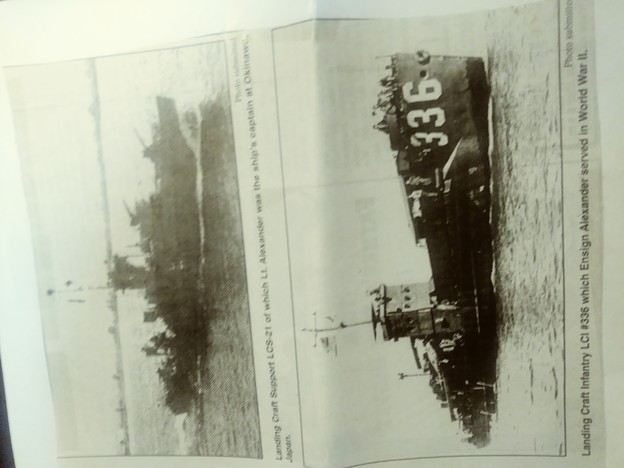|
Jan Alexander
Better alittle late than never, I posted this on the other site but want to post this on here , too... to honor those who have served in OUR country's military... We owe our lives to all these men and women.
"Anywho..to continue my thoughts on my Dad's World War II post , he was born in the Panhandle of Oklahoma during the dust bowl days and got his college degree in French and Spanish. I guess he wanted to get the hell out of Dodge. That is how he landed a job in Colombia , South America when I was 1 year old...
Anywho, who ; his last years were in a little rural town in another state where he lived with his second wife. Steve , you brought up Jaguars which had 12 cylinders... .. It reminded me of my Dad. He always loved cars. We had a MGB and a Karmann Ghia when I was in my late teens and early 20's. But later as an old man, he purchased a evergreen colored Jag with camel color leather interior. When there was a little town parade in his agriculture town , they would always ask him to drive his car in the Memorial Day Parade . He even drove a retired Rear Admiral around for the crowds.
Anywho ,who , who.... as I watched the movie, MIDWAY, I remembered Dad's little town paper wrote a big article on my Dad's life... I guess to draw attention away from otherwise the prices of wheat and grain for the day... So I dragged it out of my files . It is weird how we aren't really interested in our parent's past as we grow up , it is always all about US. As I re-read the article , there are things I never knew about or even inquired about his military history . I am now very grateful the journalist who interviewed him , published the article.
Alexander recalls U.S. Navy experiences in World War II
......."In 1941 he joined the Navy , " to keep from getting drafted" and was assigned to the Navy's V7 Reserve Officers Training Program. After graduating, his first job was in New Orleans in Naval Intellligence . He continued the assignments of Officer in Charge of the Habor Entrance Control post , the assigned duty commanding a small patrol craft of the waters of the Gulf of Mexico, and the assigned duty on a coastal transport which sailed for the Soloman Islands in South Pacific.
"Promoted to Lt. (jg) , he was given command of LCI 336 , as small craft designed for landing and beaching operations which participated in landings at New Georgia Is and Bouganville in the South Pacific. In 1944 , Lt. (jg) was promoted to Lieutenant and transfered to the Amphibious training Base at Solomons, Md. to train a crew but then training was cut short to replace a Ship's Captain who was taken off for medical reasons. His new ship was a Landing Craft Support 21 used for close inshore troop support and fighting. The LCS had 70 enlisted men and 6 officers. In November 1944 , he took the ship back to the South Pacific to get ready for the invasion of Okinawa. In March 1945 ,the massive US invasion fleet began it's northern journey towards Okinawa. It was a difficult trip with waves peaking at 25 to 30 feets. On April 1, 1945 , together with 1,500 other ships, they began the invasion of Okinawa. Alexander and his crew would soon experience a new type of War-fare - fanatical Japanese suicide Kamikaze planes. His LCS was used as a "Marker" that tells the ships with troops where to go in for landing. With 1,500 ships in the invasion fleet, the Japs suicide planes had plenty of targets; usually they went for the larger ships, aircraft carriers , battleships and cruisers. Alexander's gunnery crew had alots of shooting to do, firing away at suicide planes, hoping to shoot them down before the planes had a chance to crash into the US Navy ship. Alexander's ship was ordered to "picket duty", standing guard north and west of Okinawa to shoot down any suicide planes. Nearly 5,000 Navy personnel were killed or wounded from the Kamikaze air attacks. Hundreds of sailors in the invasion fleet suffered psychological problems from their seemingly helplessness of defending themselves against the air attacks.
After the Battle of Okinawa , Lt. Alexander received his Honorable Discharge on Jan. 2 1946. He received the Pacific Campaign Ribbon with 4 bronze stars and the WW II Victory Medal and promoted to Lieutenant Commander in the Naval Reserve.
AND NOW YOU HAVE THE REST OF THE STORY !
One last note, I think he would rise from his ashes if he had witnessed those sorry son's of bitches storming the Capital this past January ... who were fighting against our country instead of fighting for the preservation of our country .
United we stand , divided we loose.
AND now you also know why I cuss... My father was a sailor man. He cussed up a storm. 

|